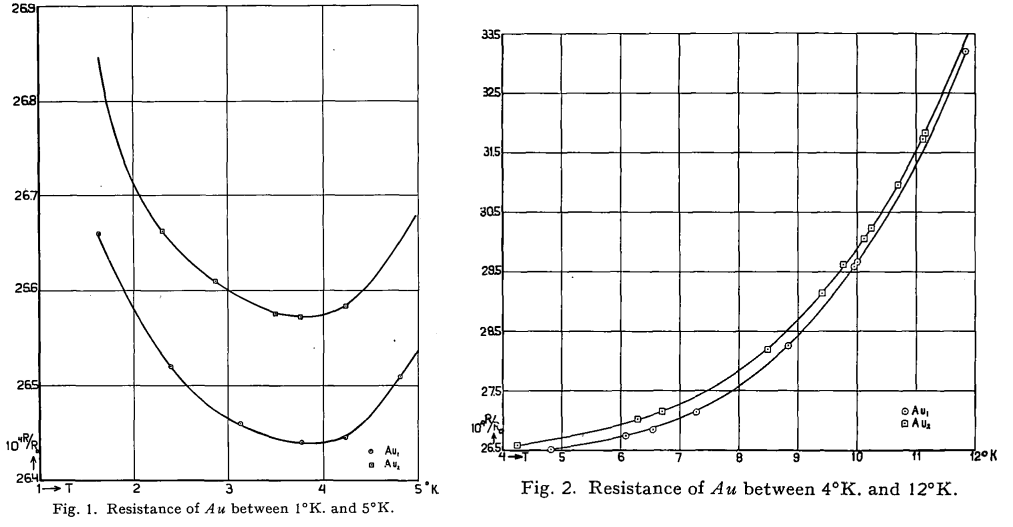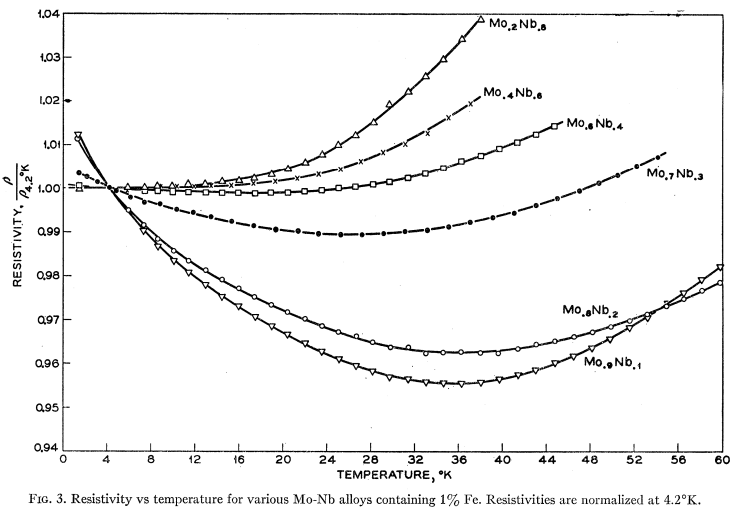In 1934, de Haas, de Boer and van den Berg showed that the low temperature resistance of “not very pure” gold exhibited a rather peculiar feature. There existed a minimum in the resistance as temperature was reduced. Below are two figures showing the resistance of as a function of temperature in the range from 1-5 K and from 4-12 K:
In normal metals, like gold, it was thought that as temperature decreased, one would always observe a decrease in resistance due to reduced phonon scattering and then a plateau at low temperatures due to the presence of impurities. It was thus surprising that in gold, and subsequently many other metals, the resistance possessed a minimum and then started to increase at lower temperatures. Understanding of this phenomenon, now known as the Kondo effect, took the combined effort of many physicists.
About 30 years after the initial discovery, material purity could be controlled to systematically investigate the effect of magnetic impurities on the resistance minimum. Clogston, Matthias and colleagues in 1961 showed that 1% of iron dissolved in a Nb-Mo alloy exhibited a Curie-Weiss susceptibility at low temperatures, which provided strong evidence of local moments. Then, in 1964, Sarachik and colleagues demonstrated that this 1% dissolution of Fe in Nb-Mo alloys systematically led to a resistance minimum. Below is the famous plot from Sarachik’s paper showing the resistance minimum as the Nb-Mo ratio was varied. When the susceptibility showed local moment formation, a minimum in the resistance developed:
A theoretical breakthrough was made in 1964 when J. Kondo used perturbation theory to analyze the s-d model developed by P.W. Anderson to show that a resistance minimum can arise due to the scattering of conduction electrons from magnetic impurities. However, only with the advent of the renormalization group was the problem fully solved by Wilson in 1975, as Kondo’s solution gave an unphysical logarithmic divergence in the resistance at low temperatures. It took more than 40 years to solve this seemingly innocent problem, which still continues to be of interest today in the context of heavy fermion superconductors and quantum dots.

